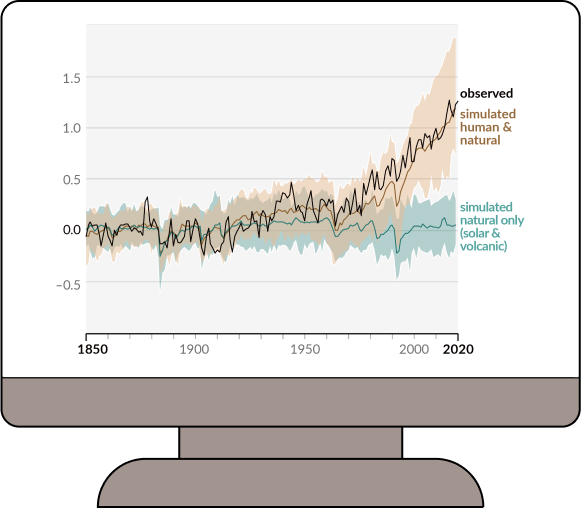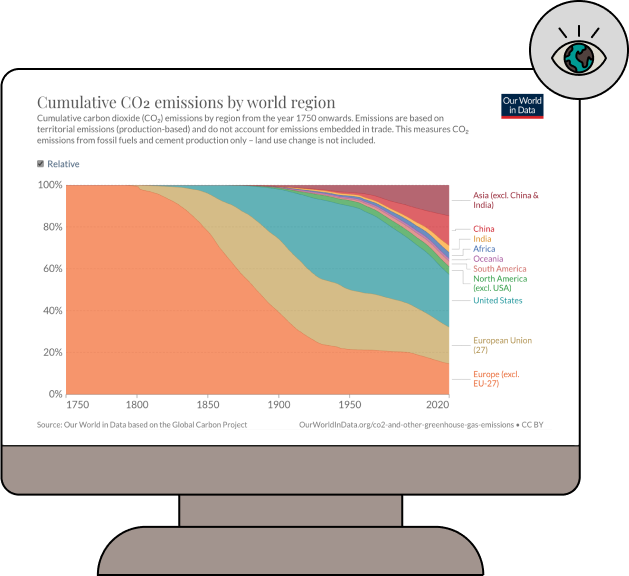With more of these gases, more radiation is blocked into the atmosphere. As a result, the earth heats up more and more.
What is the issue with carbon emissions?
First, let’s understand what a greenhouse gas phenomenon is
The greenhouse gas effect is a natural phenomenon that contributes to maintaining a habitable temperature on the Earth.
The main gases responsible for the greenhouse effect include carbon dioxide (CO2), methane (CH4), nitrous oxide (N2O), and water vapor.
When the sun's rays reach the earth...
2/3 of them are absorbed by the oceans, soil and trees
1/3 are reflected into the atmosphere in the form of infrared radiation.
Several gases in the atmosphere prevent part of this radiation from escaping into space and sending it back to Earth.
This greenhouse gas phenomenon heats the Earth up to reach a temperature of 15°C , which enables life on earth.
Without this greenhouse effect, the temperature on Earth would be on average -18°C
Carbon dioxide (CO2) is one of the gases that generates the higher greenhouse effects.
There is a fine balance between the carbon used by plants on Earth and microplanktons in the oceans, and its natural release by life activity in the atmosphere.
Over a very long period, unused carbon has accumulated as natural, fossilized carbon in the deep layers of earth.
So what’s wrong ?
In the last century, the intensive human activity linked to the industrial era and consequent need for energy has resulted in massive use of those fossil carbon reservoirs, known as fossil fuels (oil, coal, gas) while promoting intensive agriculture and landfill.
These cause a huge increase of GHG emissions in the atmosphere that unbalances the system.
Meanwhile, deforestation and urbanization don’t allow soil and trees to absorb the CO2 surplus. And as part of global warming, the oceans are also becoming warmer, making it more difficult for CO2 to dissolve in the seas.
As a result, less CO2 is absorbed, contributing to an increase in gas in the atmosphere.

Change in global surface temperature (annual average) as observed and simulated using human & natural and only natural factors (both 1850–2020). Source: IPCC.
Today, the average earth temperature has already increased by + 1,2°c compared to 1850.





